Born 21 Nov 1914; died 18 May 1995 at age 80.
French neurologist and discoverer of some of the earliest known tranquilizing drugs, including chlorpromazine.
French neurologist and discoverer of some of the earliest known tranquilizing drugs, including chlorpromazine.
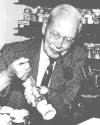
Born 21 Nov 1891; died 5 Apr 1970 at age 78. quotes
American geneticist who developed (1913) a technique for mapping the location of specific genes of the chromosomes in the fruit fly Drosophila. Sturtevant's method for “chromosome mapping”, relies on the analysis of groups of linked genes. His paper, published in 1913, described the location of six sex-linked genes as deduced by the way in which they associate with each other: it is one of the classic papers in genetics. Sturtevant later discovered the so-called 'position effect', in which the expression of a gene depends on its position in relation to other genes. He also demonstrated that crossing over between chromosomes is prevented in regions where a part of the chromosome material is inserted the wrong way round.
American geneticist who developed (1913) a technique for mapping the location of specific genes of the chromosomes in the fruit fly Drosophila. Sturtevant's method for “chromosome mapping”, relies on the analysis of groups of linked genes. His paper, published in 1913, described the location of six sex-linked genes as deduced by the way in which they associate with each other: it is one of the classic papers in genetics. Sturtevant later discovered the so-called 'position effect', in which the expression of a gene depends on its position in relation to other genes. He also demonstrated that crossing over between chromosomes is prevented in regions where a part of the chromosome material is inserted the wrong way round.
History Of Genetics, by A. H. Sturtevant. - book suggestion.
Born 21 Nov 1868; died 30 Sep 1939 at age 70.
American physician and pediatric pathologist. Her first experimental work involved infant diarrhea and confirmed earlier studies relating the dysentery bacillus to the disease. At the Rockefeller Institute of Medical Research, she collaborated on the first experimental work on polio in the U.S., worked on an early investigation of pneumonia and developed, with Harold Amoss, a method for preparing antimeningitis serum. She also pioneered in early research on mumps, indicating, though not proving, its viral nature. After 1921, Wollstein investigated pediatric pathology at the Babies Hospital, especially jaundice, congenital anomalies, tuberculosis, meningitis, and leukemia. In 1930, she was the first female member of the American Pediatric Society.
American physician and pediatric pathologist. Her first experimental work involved infant diarrhea and confirmed earlier studies relating the dysentery bacillus to the disease. At the Rockefeller Institute of Medical Research, she collaborated on the first experimental work on polio in the U.S., worked on an early investigation of pneumonia and developed, with Harold Amoss, a method for preparing antimeningitis serum. She also pioneered in early research on mumps, indicating, though not proving, its viral nature. After 1921, Wollstein investigated pediatric pathology at the Babies Hospital, especially jaundice, congenital anomalies, tuberculosis, meningitis, and leukemia. In 1930, she was the first female member of the American Pediatric Society.
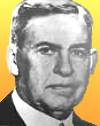
Born 21 Nov 1867; died 29 Nov 1952 at age 85.
Russian-American chemist who was one of the first to investigate high-pressure catalytic reactions of hydrocarbons and who developed a process for manufacturing high-octane gasoline. While studying in Munich (1897) Ipatieff achieved the synthesis of isoprene, the basic unit of the rubber molecule. Upon return to Russia he worked particularly on the use of high-pressure catalysis and of metallic oxides as catalysts. With these techniques, he helped to establish the petrochemical industry in both pre- and post-revolutionary Russia. Before WW I, he had synthesized isooctane, and had polymerized ethylene. After moving to the U.S. (1930), Ipatieff showed how to convert low-octane gasolines into high-octane by 'cracking' hydrocarbons at high temperatures.
Russian-American chemist who was one of the first to investigate high-pressure catalytic reactions of hydrocarbons and who developed a process for manufacturing high-octane gasoline. While studying in Munich (1897) Ipatieff achieved the synthesis of isoprene, the basic unit of the rubber molecule. Upon return to Russia he worked particularly on the use of high-pressure catalysis and of metallic oxides as catalysts. With these techniques, he helped to establish the petrochemical industry in both pre- and post-revolutionary Russia. Before WW I, he had synthesized isooctane, and had polymerized ethylene. After moving to the U.S. (1930), Ipatieff showed how to convert low-octane gasolines into high-octane by 'cracking' hydrocarbons at high temperatures.
The life of a chemist: Memoirs of Vladimir N. Ipatieff, by Vladimir N. Ipatieff. - book suggestion.
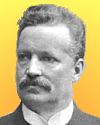
Born 21 Nov 1849; died 17 Nov 1925 at age 75.
Swedish metallurgist who devised the Brinell hardness test, a rapid, nondestructive means of determining the hardness of metals. Brinell studied many aspects of iron and its production. Brinell´s important work on transformations in steel during heating and cooling. His discoveries about the control of the carbon containing phases is the present basis for the knowledge about properties of steel. The Brinell Hardness Test measures the relative hardness of metals and alloys, by forcing a 10mm hard steel ball into a test piece with a 3000kg load for 30 seconds and measuring the surface area of the resulting indentation. The load is reduced to 500kg for very soft materials and the steel ball is replaced with tungsten carbide for very hard materials.
Swedish metallurgist who devised the Brinell hardness test, a rapid, nondestructive means of determining the hardness of metals. Brinell studied many aspects of iron and its production. Brinell´s important work on transformations in steel during heating and cooling. His discoveries about the control of the carbon containing phases is the present basis for the knowledge about properties of steel. The Brinell Hardness Test measures the relative hardness of metals and alloys, by forcing a 10mm hard steel ball into a test piece with a 3000kg load for 30 seconds and measuring the surface area of the resulting indentation. The load is reduced to 500kg for very soft materials and the steel ball is replaced with tungsten carbide for very hard materials.
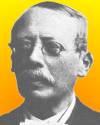
Born 21 Nov 1824; died 25 Sep 1898 at age 73.
German mineralogist who in 1863 was a co-discoverer of the element indium. He was an expert in metallurgy, essaying and an authority on blowpipe analysis. He was assistant to Ferdinand Reich who suspected a new element was present in the samples of zinc ore he had chemically processed. Reich was colourblind and turned over the job of making a spectroscopic analysis to his assistant. When Richter placed some of the sample in a loop of platinum wire and heated it in the flame of a Bunsen burner, he observed a brilliant indigo line characteristic of this as a new element - called indium after the colour of this line. After separating the hydrated oxide of indium, they reduced it to obtain a sample of the new metal.
German mineralogist who in 1863 was a co-discoverer of the element indium. He was an expert in metallurgy, essaying and an authority on blowpipe analysis. He was assistant to Ferdinand Reich who suspected a new element was present in the samples of zinc ore he had chemically processed. Reich was colourblind and turned over the job of making a spectroscopic analysis to his assistant. When Richter placed some of the sample in a loop of platinum wire and heated it in the flame of a Bunsen burner, he observed a brilliant indigo line characteristic of this as a new element - called indium after the colour of this line. After separating the hydrated oxide of indium, they reduced it to obtain a sample of the new metal.
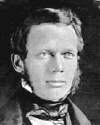
Born 21 Nov 1818; died 17 Dec 1881 at age 63. quotes
American ethnologist and a principal founder of scientific anthropology, known especially for establishing the study of kinship systems and for his comprehensive theory of social evolution. Morgan discovered that the Indians in North America had some kinship patterns in common with each other. He was the first person to classify the kinship system of relationship in The Indian Journals (1859-62). Morgan's work was the foundation for the new world view of genetic explanation, cultural evolution or social Darwinism, in Houses and House-life of the American Aborigines (1865). He also brought to the people's attention the organization of the ancient Greeks and Romans was the same as the clan organization of the Indian tribes.
American ethnologist and a principal founder of scientific anthropology, known especially for establishing the study of kinship systems and for his comprehensive theory of social evolution. Morgan discovered that the Indians in North America had some kinship patterns in common with each other. He was the first person to classify the kinship system of relationship in The Indian Journals (1859-62). Morgan's work was the foundation for the new world view of genetic explanation, cultural evolution or social Darwinism, in Houses and House-life of the American Aborigines (1865). He also brought to the people's attention the organization of the ancient Greeks and Romans was the same as the clan organization of the Indian tribes.
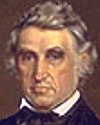
Born 21 Nov 1785; died 25 Apr 1853 at age 67. quotes
American army surgeon who was the first person to observe and study human digestion as it occurs in the stomach. As a young army surgeon stationed on Mackinac Island in Michigan, Beaumont was asked to treat a shotgun wound. The wound was "more than the size of the palm of a man's hand," Beaumont wrote. The patient, Alexis St. Martin, survived but was left with a permanent opening into his stomach from the outside. Over the next few years, Dr. Beaumont used this crude fistula to sample gastric secretions. He identified hydrochloric acid as the principal agent in gastric juice and recognized its digestive and bacteriostatic functions. Moreover, many of his conclusions about the regulation of secretion and motility remain valid to this day.
American army surgeon who was the first person to observe and study human digestion as it occurs in the stomach. As a young army surgeon stationed on Mackinac Island in Michigan, Beaumont was asked to treat a shotgun wound. The wound was "more than the size of the palm of a man's hand," Beaumont wrote. The patient, Alexis St. Martin, survived but was left with a permanent opening into his stomach from the outside. Over the next few years, Dr. Beaumont used this crude fistula to sample gastric secretions. He identified hydrochloric acid as the principal agent in gastric juice and recognized its digestive and bacteriostatic functions. Moreover, many of his conclusions about the regulation of secretion and motility remain valid to this day.
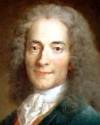
Born 21 Nov 1694; died 30 May 1778 at age 83. quotes
François Marie Arouet Voltaire was a French author who popularized Isaac Newton's work in France by arranging a translation of Principia Mathematica to which he added his own commentary (1737). The work of the translation was done by the marquise de Châtelet who was one of his mistresses, but Voltaire's commentary bridged the gap between non-scientists and Newton's ideas at a time in France when the pre-Newtonian views of Descartes were still prevalent. Although a philosopher, Voltaire advocated rational analysis. He died on the eve of the French Revolution.
François Marie Arouet Voltaire was a French author who popularized Isaac Newton's work in France by arranging a translation of Principia Mathematica to which he added his own commentary (1737). The work of the translation was done by the marquise de Châtelet who was one of his mistresses, but Voltaire's commentary bridged the gap between non-scientists and Newton's ideas at a time in France when the pre-Newtonian views of Descartes were still prevalent. Although a philosopher, Voltaire advocated rational analysis. He died on the eve of the French Revolution.
The attitude of Voltaire to magic and the sciences, by Margaret Libby. - book suggestion.
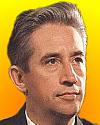
Died 21 Nov 2009 at age 83 (born 7 Feb 1926).
Russian cosmonaut and space engineer who, from 1955, was part of the team that would go on to design the Sputnik, Vostok, Voskhod, and Soyuz spacecraft under the leadership of Sergey Korolev. He trained as a cosmonaut, and eventually launched 12 Oct 1964 for 16 earth orbits as one of the crew of Voskhod 1 (with Vladimir M. Komarov and Boris B. Yegorov), the world's first multimanned spaceflight. Only ten people had been into orbit before the Voskhod 1 mission. When his career as a cosomonaut ended for medical reasons, he continued as a space engineer eventually becoming head of the Soviet space design bureau that designed the Salyut and Mir space stations.«
Russian cosmonaut and space engineer who, from 1955, was part of the team that would go on to design the Sputnik, Vostok, Voskhod, and Soyuz spacecraft under the leadership of Sergey Korolev. He trained as a cosmonaut, and eventually launched 12 Oct 1964 for 16 earth orbits as one of the crew of Voskhod 1 (with Vladimir M. Komarov and Boris B. Yegorov), the world's first multimanned spaceflight. Only ten people had been into orbit before the Voskhod 1 mission. When his career as a cosomonaut ended for medical reasons, he continued as a space engineer eventually becoming head of the Soviet space design bureau that designed the Salyut and Mir space stations.«
The Rocket Men: Vostok and Voskhod, by Rex Hall, David Shayler. - book suggestion.
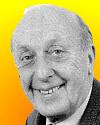
Died 21 Nov 2004 at age 88 (born 28 Feb 1916).
British inventor and manufacturer of skin-care products who invented Swarfega hand cleaner, a green jelly that mechanics, printers and others use to wash grease, grime, and ink from their hands. "AB," as he was known, started his company, Deb Ltd., in 1941, selling a mild detergent to treat silk stocking, a market which collapsed with the arrival of nylons after WW II. However, he knew that mechanics cleaned their hands with petrol, paraffin and sand which was effective at removing oil, but also caused dry skin and dermatitis. He adapted his detergent formula to clean oil from skin without these side effects, and named it by combining "swarf" (term for greasy grit) and "-ega" (eager). By the time he retired, the company had 20 brands.«
British inventor and manufacturer of skin-care products who invented Swarfega hand cleaner, a green jelly that mechanics, printers and others use to wash grease, grime, and ink from their hands. "AB," as he was known, started his company, Deb Ltd., in 1941, selling a mild detergent to treat silk stocking, a market which collapsed with the arrival of nylons after WW II. However, he knew that mechanics cleaned their hands with petrol, paraffin and sand which was effective at removing oil, but also caused dry skin and dermatitis. He adapted his detergent formula to clean oil from skin without these side effects, and named it by combining "swarf" (term for greasy grit) and "-ega" (eager). By the time he retired, the company had 20 brands.«
Died 21 Nov 2000 at age 93 (born 22 Aug 1907). quotes
Cyril Astley Clark was an English geneticist whose hobby cross-breeding butterflies, caused a curiosity about the genetically resulting wing color patterns. He realized there were parallels with inheritance of human blood types. This led to discoveries by him and others that eventually thwarted the Rh disease of newborn babies. The rhesus hemolytic disease could result in a fatal anemia in the baby born of a positive-Rhesus-factor father and a negative-Rhesus-factor mother. This disorder caused the women with Rh-negative blood to produce antibodies to the blood of their Rh-positive babies. At least 10,000 yearly in the U.S. resulted in severe brain damage or stillbirths. Knowing the cause, enabled more research to save newborns. This was one of the triumphs of preventative medicine.«
Cyril Astley Clark was an English geneticist whose hobby cross-breeding butterflies, caused a curiosity about the genetically resulting wing color patterns. He realized there were parallels with inheritance of human blood types. This led to discoveries by him and others that eventually thwarted the Rh disease of newborn babies. The rhesus hemolytic disease could result in a fatal anemia in the baby born of a positive-Rhesus-factor father and a negative-Rhesus-factor mother. This disorder caused the women with Rh-negative blood to produce antibodies to the blood of their Rh-positive babies. At least 10,000 yearly in the U.S. resulted in severe brain damage or stillbirths. Knowing the cause, enabled more research to save newborns. This was one of the triumphs of preventative medicine.«
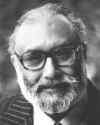
Died 21 Nov 1996 at age 70 (born 29 Jan 1926). quotes
Pakistani-British nuclear physicist who shared the 1979 Nobel Prize for Physics with Steven Weinberg and Sheldon Lee Glashow. Each had independently formulated a theory explaining the underlying unity of the weak nuclear force and the electromagnetic force. His hypothetical equations, which demonstrated an underlying relationship between the electromagnetic force and the weak nuclear force, postulated that the weak force must be transmitted by hitherto-undiscovered particles known as weak vector bosons, or W and Z bosons. Weinberg and Glashow reached a similar conclusion using a different line of reasoning. The existence of the W and Z bosons was eventually verified in 1983 by researchers using particle accelerators at CERN.
Pakistani-British nuclear physicist who shared the 1979 Nobel Prize for Physics with Steven Weinberg and Sheldon Lee Glashow. Each had independently formulated a theory explaining the underlying unity of the weak nuclear force and the electromagnetic force. His hypothetical equations, which demonstrated an underlying relationship between the electromagnetic force and the weak nuclear force, postulated that the weak force must be transmitted by hitherto-undiscovered particles known as weak vector bosons, or W and Z bosons. Weinberg and Glashow reached a similar conclusion using a different line of reasoning. The existence of the W and Z bosons was eventually verified in 1983 by researchers using particle accelerators at CERN.
Cosmic Anger: Abdus Salam, The First Muslim Nobel Scientist, by Gordon Fraser. - book suggestion.
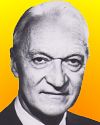
Died 21 Nov 1993 at age 88 (born 13 Apr 1905).
Bruno Benedetto Rossi was an Italian-American physicist who was a pioneer in the study of cosmic radiation. In the 1930s, his experimental investigations of cosmic rays and their interactions with matter laid the foundation for high energy particle physics. Cosmic rays are atomic particles that enter earth's atmosphere from outer space at speeds approaching that of light, bombarding atmospheric atoms to produce mesons as well as secondary particles possessing some of the original energy. He was one of the first to use rockets to study cosmic rays above the Earth's atmosphere. Finding X-rays from space he became the grandfather of high energy astrophysics, being largely responsible for starting X-ray astronomy, as well as the study of interplanetary plasma.
Bruno Benedetto Rossi was an Italian-American physicist who was a pioneer in the study of cosmic radiation. In the 1930s, his experimental investigations of cosmic rays and their interactions with matter laid the foundation for high energy particle physics. Cosmic rays are atomic particles that enter earth's atmosphere from outer space at speeds approaching that of light, bombarding atmospheric atoms to produce mesons as well as secondary particles possessing some of the original energy. He was one of the first to use rockets to study cosmic rays above the Earth's atmosphere. Finding X-rays from space he became the grandfather of high energy astrophysics, being largely responsible for starting X-ray astronomy, as well as the study of interplanetary plasma.
Moments in the Life of a Scientist, by Bruno Rossi. - book suggestion.
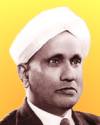
Died 21 Nov 1970 at age 82 (born 7 Nov 1888).
Indian physicist whose work was influential in the growth of science in India. He was the recipient of the 1930 Nobel Prize for Physics for the 1928 discovery now called Raman scattering: a change in frequency observed when light is scattered in a transparent material. When monochromatic or laser light is passed through a transparent gas, liquid, or solid and is observed with the spectroscope, the normal spectral line has associated with it lines of longer and of shorter wavelength, called the Raman spectrum. Such lines, caused by photons losing or gaining energy in elastic collisions with the molecules of the substance, vary with the substance. Thus the Raman effect is applied in spectrographic chemical analysis and in the determination of molecular structure.
Indian physicist whose work was influential in the growth of science in India. He was the recipient of the 1930 Nobel Prize for Physics for the 1928 discovery now called Raman scattering: a change in frequency observed when light is scattered in a transparent material. When monochromatic or laser light is passed through a transparent gas, liquid, or solid and is observed with the spectroscope, the normal spectral line has associated with it lines of longer and of shorter wavelength, called the Raman spectrum. Such lines, caused by photons losing or gaining energy in elastic collisions with the molecules of the substance, vary with the substance. Thus the Raman effect is applied in spectrographic chemical analysis and in the determination of molecular structure.
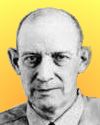
Died 21 Nov 1963 (born 1890).
American criminal, known as the Birdman of Alcatraz, a convicted murderer who became a self-taught ornithologist during his 54 years in prison, 42 of them in solitary confinement. In Leavenworth he began raising canaries and other birds, collecting laboratory equipment, and studying the diseases of birds and their breeding and care. Some of his research writings were smuggled out of prison and published; his book, Stroud's Digest on the Diseases of Birds, published in 1943, was an important work in the field. In 1942, however, Stroud was transferred to Alcatraz, where he was allowed to continue his research but denied further right of publication. He spent the last four years of his life at the Medical Center for Federal Prisoners at Springfield, Mo.
American criminal, known as the Birdman of Alcatraz, a convicted murderer who became a self-taught ornithologist during his 54 years in prison, 42 of them in solitary confinement. In Leavenworth he began raising canaries and other birds, collecting laboratory equipment, and studying the diseases of birds and their breeding and care. Some of his research writings were smuggled out of prison and published; his book, Stroud's Digest on the Diseases of Birds, published in 1943, was an important work in the field. In 1942, however, Stroud was transferred to Alcatraz, where he was allowed to continue his research but denied further right of publication. He spent the last four years of his life at the Medical Center for Federal Prisoners at Springfield, Mo.
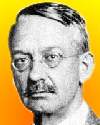
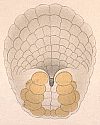
embryo
American biologist and embryologist. In 1905, when working with a small marine creature called a tunicate, Conklin made a striking observation: the contents of the tunicate egg weren't uniform. Different parts of it were differently colored. When the mother egg began to divide, the new daughter cells that came from different colored areas became, as they split away, different types of tissue. The yellow stuff in the egg produced muscle cells, for instance, and the grayish stuff became the gut. In addition to his work in embryology, he published a number of works on evolution. He estimated he made a thousand public lectures interpreting evolution to religious and lay groups. He was a leading critic of society's response to advanced technology.
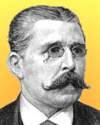
Died 21 Nov 1904 at age 72 (born 29 Jun 1832).
Italian-born American Army officer, archaeologist, and museum director who amassed one of the largest collections of antiquities from Cyprus. In 1865, having been naturalized, he was appointed U.S. consul to Cyprus, where he remained 11 years, gathering some 35,000 objects from nearly 70,000 tombs. The bulk of his collection was acquired by the Metropolitan Museum of Art, New York City (1872), of which he was director from 1879 to 1904. The accuracy of the records that he made of objects from his collection was repeatedly challenged, but modern research has tended to vindicate him. His published works include Cyprus: Its Ancient Cities, Tombs, and Temples (1877).
Italian-born American Army officer, archaeologist, and museum director who amassed one of the largest collections of antiquities from Cyprus. In 1865, having been naturalized, he was appointed U.S. consul to Cyprus, where he remained 11 years, gathering some 35,000 objects from nearly 70,000 tombs. The bulk of his collection was acquired by the Metropolitan Museum of Art, New York City (1872), of which he was director from 1879 to 1904. The accuracy of the records that he made of objects from his collection was repeatedly challenged, but modern research has tended to vindicate him. His published works include Cyprus: Its Ancient Cities, Tombs, and Temples (1877).
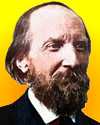
Died 21 Nov 1891 at age 73 (born 7 Jan 1818). quotes
American clergyman, mathematician and natural scientist who from an early age had an interest in botany, and also mathematics, a subject he enjoyed during his batchelor's degree courses at Harvard. He changed direction when he next obtained a divinity degree and spent 14 years in the ministry. During this time, in 1849, he published a book, Geometry and Faith. Hill also wrote several papers in mathematics and astronomy. In 1857, he patented a calculating machine (U.S. patent No. 18692), marketed as the improved arithmometer, which is regarded as the first popular key-driven device of its kind in the U.S. For six years, 1862-1868, Hill served as President of Harvard University. In 1873 he returned to the ministry, but still pursued lecturing, scientific and educational experiments.«
American clergyman, mathematician and natural scientist who from an early age had an interest in botany, and also mathematics, a subject he enjoyed during his batchelor's degree courses at Harvard. He changed direction when he next obtained a divinity degree and spent 14 years in the ministry. During this time, in 1849, he published a book, Geometry and Faith. Hill also wrote several papers in mathematics and astronomy. In 1857, he patented a calculating machine (U.S. patent No. 18692), marketed as the improved arithmometer, which is regarded as the first popular key-driven device of its kind in the U.S. For six years, 1862-1868, Hill served as President of Harvard University. In 1873 he returned to the ministry, but still pursued lecturing, scientific and educational experiments.«
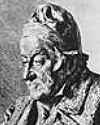
Died 21 Nov 1881 at age 87 (born 16 Mar 1794).
Austrian geological pioneer who fostered international cooperation in geological research. While studying medicine in Edinburgh, he was influenced by the noted Scottish geologist Robert Jameson and studied the volcanic rocks in various parts of Scotland and the Hebrides. After he received his M.D. (1817) Boué continued his medical studies in Europe, but ultimately decided to devote himself to geology. He settled in Paris in 1830 and was a founder of the Société Géologique de France. For the next four years he published reports on geological progress in other countries. In 1845 he finished his comprehensive overview of geology, Essai de carte géologique du globe terrestre ("Essay on a Geological Map of the World").
Austrian geological pioneer who fostered international cooperation in geological research. While studying medicine in Edinburgh, he was influenced by the noted Scottish geologist Robert Jameson and studied the volcanic rocks in various parts of Scotland and the Hebrides. After he received his M.D. (1817) Boué continued his medical studies in Europe, but ultimately decided to devote himself to geology. He settled in Paris in 1830 and was a founder of the Société Géologique de France. For the next four years he published reports on geological progress in other countries. In 1845 he finished his comprehensive overview of geology, Essai de carte géologique du globe terrestre ("Essay on a Geological Map of the World").
Died 21 Nov 1863 (born 1781).
English engineer who invented the surface condenser for steam boilers (patented 1834), an important milestone of its era, because it possible to recirculate fresh water instead of using corrosive salt water in the boilers of ocean-going steam ships. Steam passed through a number of small condensing tubes cooled on the outside surfaces by the circulation of cold sea water around them. By keeping the boilers free of salt, a considerable saving of fuel was realized, and repair expenses were reduced. Initial trials were unsuccessful until improved by a patent by Spencer who inserted an indiarubber ring around each end of the tube to keep them properly water tight. Hall held more than 20 patents, mostly relating to steam engines and boilers.
English engineer who invented the surface condenser for steam boilers (patented 1834), an important milestone of its era, because it possible to recirculate fresh water instead of using corrosive salt water in the boilers of ocean-going steam ships. Steam passed through a number of small condensing tubes cooled on the outside surfaces by the circulation of cold sea water around them. By keeping the boilers free of salt, a considerable saving of fuel was realized, and repair expenses were reduced. Initial trials were unsuccessful until improved by a patent by Spencer who inserted an indiarubber ring around each end of the tube to keep them properly water tight. Hall held more than 20 patents, mostly relating to steam engines and boilers.
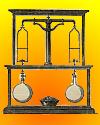
Died 21 Nov 1841 (born c. 1779).
(a.k.a. Nicolas Clement-Desormes) French chemist who collaborated with Charles-Bernard Desormes (later to be his father-in-law) in the exact determination of the composition of carbon monoxide and carbon disulphide (1801-1802) Their analysis of the chemical ractions involved in the manufacture of sulphuric acid, enabled improvements in the commercial process. Clément announced to the French Institute on 29 Nov 1813, that a new substance had been discovered by Bernard Courtois which later was confirmed to be a new element, iodine. After a limited investigation of his discovery of the violet crystals (1811), Courtois had turned to Clément and Desormes to apply their greater talent and laboratory resources to its investigation.«[Dict. of Sci. Biog. gives birth range of dates as the end of 1778 or beginning of 1779. Image: Apparatus used by Clement and Desormes to determine the density of air.]
(a.k.a. Nicolas Clement-Desormes) French chemist who collaborated with Charles-Bernard Desormes (later to be his father-in-law) in the exact determination of the composition of carbon monoxide and carbon disulphide (1801-1802) Their analysis of the chemical ractions involved in the manufacture of sulphuric acid, enabled improvements in the commercial process. Clément announced to the French Institute on 29 Nov 1813, that a new substance had been discovered by Bernard Courtois which later was confirmed to be a new element, iodine. After a limited investigation of his discovery of the violet crystals (1811), Courtois had turned to Clément and Desormes to apply their greater talent and laboratory resources to its investigation.«[Dict. of Sci. Biog. gives birth range of dates as the end of 1778 or beginning of 1779. Image: Apparatus used by Clement and Desormes to determine the density of air.]
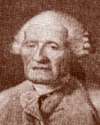
Died 21 Nov 1782 at age 73 (born 24 Feb 1709). quotes
French inventor of automata - robot devices of later significance for modern industry. In 1737-38, he produced a transverse flute player, a pipe and tabor player, and a mechanical duck, which was especially noteworthy, not only imitating the motions of a live duck, but also the motions of drinking, eating, and "digesting." He made improvements in the mechanization of silk weaving, but his most important invention was ignored for several decades - that of automating the loom by means of perforated cards that guided hooks connected to the warp yarns. (Later reconstructed and improved by J.-M. Jacquard, it became one of the most important inventions of the Industrial Revolution.) He also invented many machine tools of permanent importance.
French inventor of automata - robot devices of later significance for modern industry. In 1737-38, he produced a transverse flute player, a pipe and tabor player, and a mechanical duck, which was especially noteworthy, not only imitating the motions of a live duck, but also the motions of drinking, eating, and "digesting." He made improvements in the mechanization of silk weaving, but his most important invention was ignored for several decades - that of automating the loom by means of perforated cards that guided hooks connected to the warp yarns. (Later reconstructed and improved by J.-M. Jacquard, it became one of the most important inventions of the Industrial Revolution.) He also invented many machine tools of permanent importance.
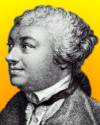
(EB)
Died 21 Nov 1775 (born c. 1716).
English writer and botanist who compiled the first book on British flora to be based on the Linnaean nomenclature. While an apothecary by trade, he studied botany in his spare time. Employed by the Duke of Richmond and Lord Petre to arrange their collections of plants, he travelled extensively to collect rare plants for them. He also wrote plays, novels, and papers on natural history, medicine, astronomy, and geology. He edited the monthly British Magazine (1746-50) and contributed a daily society-gossip column to The London Advertiser and the Literary Gazette. In 1759, the first of the 26 folio volumes (1759-75) of his Vegetable System was published, containing 1,600 copper plate engravings, represented 26,000 different plants.
English writer and botanist who compiled the first book on British flora to be based on the Linnaean nomenclature. While an apothecary by trade, he studied botany in his spare time. Employed by the Duke of Richmond and Lord Petre to arrange their collections of plants, he travelled extensively to collect rare plants for them. He also wrote plays, novels, and papers on natural history, medicine, astronomy, and geology. He edited the monthly British Magazine (1746-50) and contributed a daily society-gossip column to The London Advertiser and the Literary Gazette. In 1759, the first of the 26 folio volumes (1759-75) of his Vegetable System was published, containing 1,600 copper plate engravings, represented 26,000 different plants.
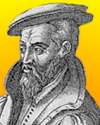
Died 21 Nov 1555 at age 61 (born 24 Mar 1494). quotes
German mineralogist and scholar known as “the father of mineralogy,” who was among the first to found a natural science upon observation and independently from theories of the ancients. Having studied medicine, he became interested in mineralogy through his study of miners' diseases. His contributions to mining geology and metallurgy, mineralogy, structural geology, and paleontology, formed a foundation for further systematic study of the Earth and of its rocks, minerals, and fossils. His most important work De Re Metallica (published a year after his death) summarized all the practical knowledge gained by Saxon miners. He may have coined the word petroleum (“rock oil”). As was the fashion of the day, he Latinized his real name of Georg Bauer (both Bauer in German and Agricola in Latin mean “farmer”.)
German mineralogist and scholar known as “the father of mineralogy,” who was among the first to found a natural science upon observation and independently from theories of the ancients. Having studied medicine, he became interested in mineralogy through his study of miners' diseases. His contributions to mining geology and metallurgy, mineralogy, structural geology, and paleontology, formed a foundation for further systematic study of the Earth and of its rocks, minerals, and fossils. His most important work De Re Metallica (published a year after his death) summarized all the practical knowledge gained by Saxon miners. He may have coined the word petroleum (“rock oil”). As was the fashion of the day, he Latinized his real name of Georg Bauer (both Bauer in German and Agricola in Latin mean “farmer”.)
De Re Metallica, by Georgius Agricola. - book suggestion.

In 1968, Sheri Schroeder was born the third child to Karen Schroeder, who lived beside the Love Canal chemical dump in the city of Niagara Falls, New York. It was the physical problems of her daughter at birth that prompted her mother to learn about the extent of the Love Canal environmental problem. A vigorous campaign brought it to the public's attention. Sheri was born with a heart that beat irregularly and had a hole in it, bone blockages of the nose, partial deafness, deformed ear exteriors, and a cleft palate. From about the late 1930s, the Hooker Company, manufacturer of pesticides, plasticizers, and caustic soda, used the abandoned canal to dump over 20,000 tons of toxic waste residues which leaked into local homes.
Love Canal: Science, Politics, and People, by Adeline Gordon Levine. - book suggestion.
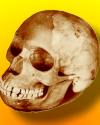
In 1953, the 40-year-long hoax of the Piltdown Man ended when the British Museum revealed that it was a “perfectly executed and carefully prepared fraud.” The Piltdown forgery was conceived, planned and executed sometime between 1907 and 1911. The faux hominid skull was constructed from the remains of a recent human cranium, later shown to have been thickened by disease during the subject's lifetime (thus giving the primitive look); half the lower jaw of an orangutan from which telltale parts had been removed and whose teeth had been filed to resemble worn human teeth; and a doctored canine tooth, probably from the same lower jaw. In all, 37 pieces of carefully selected bone and stone were involved, each altered and stained.
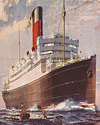
In 1922, the Cunard liner Laconia departed from New York on a global circumnavigation cruise chartered by the American Express Company. New York Times reported that for the planned 130-day voyage, passengers paid a total over $1,000,000 in fares. Sight-seeing stops included Hilo, Honolulu, Yokohama, Keelung, Port Arthur, Manila, Batavia, Singapore, Rangoon, Calcutta, Columbo, Bombay and through the Suez Canal to Egypt, Naples, and Gibraltar. The liner had been equipped with four orchestras, two swimming pools and all kinds of sports including archery. Some of the reported 450 passengers stopped off along the way. The Laconia returned with 260 on 30 Mar 1923.«
Picture History of the Cunard Line: 1840-1990, by Frank O. Braynard & William H. Miller Jr. - book suggestion.
In 1919, President Wilson used a radio telephone set up on the south portico of the White House to direct the maneuvers of a dozen army airplanes flying over the Potomac river several miles away. His telephoned directions went direct to the flight commander in the air. The instrument was similar to those used by American aviators in France in the latter part of World War I. Col. C. C. Culver actively developed the equipment. He began the project in Aug 1910. No new invention was needed, only adaptation and adjustment of existing techniques. By Aug 1916, he was able to send a radio telegraph signal from a plane. Enlisting expert help from the telephone companies, by Oct 1917, voice messages could be send between a plane and the ground. The system was put into service for military wartime use.«
more
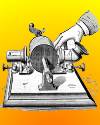
In 1877, Thomas Edison announced his invention of his “talking machine” - the tin-foil cylinder recorder that preceeded the phonograph. He appears to have envisioned it as a business dictation machine. In Sep 1877, he wrote that its purpose was “to record automatically the speech of a very rapid speaker upon paper; from which he reproduces the same Speech immediately or years afterwards preserving the characteristics of the speakers voice so that persons familiar with it would at once recognize it.” The indented tin foil, however, would survive only a few playings. By the first public showing of a phonograph, which took place in New York City in early Feb 1878, its practical applications had not yet been realized.[Image: from Scientific American, 22 Dec 1877]
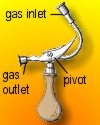
In 1871, the first U.S. patent for a cigar lighter was issued to Moses F. Gale of New York City (No. 121,049) as an "Improvement in Cigar-Lighters." It described an ornamental mechanical device to be attached by a flexible tube to a gas supply. The gas for lighting cigars travelled through a hollow body of a device shaped such as a bird. The flow of gas was regulated by an internal valve actuated by the action of the body pivoting on a control screw.
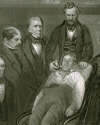
In 1846, the word anesthesia was coined by Oliver Wendell Holmes in a letter to William Thomas Green Morton, the surgeon who gave the first public demonstration of the pain-killing effects of ether.

In 1783, Jean François Pilâtre de Rozier, a professor of physics and chemistry, and the Marquis Francois Laurant d’Arlandes became the first men to make a free flight. Their hot-air balloon lifted off from La Muette, a royal palace in the Bois de Boulogne, Paris. They flew nearly 6 miles in 25 mins, reaching an altitude, it is thought, of around 3000-ft (though this is poorly documented). Spectators included Ben Franklin and King Louis XVI, who offered to send two prisoners, but Rozier wanted to deny criminals the glory of being the first men to go into the atmosphere. The Montgolfier brothers, Étienne and Joseph, had publicly demonstrated the first unmanned hot-air balloon a few months earlier, 5 Jun 1783, and a second with animals on 19 Sep 1783 to verify that air travel was safe for live beings. Pilaâtre began with low, tethered flights on 15-19 Oct 1784. After Pilâtre, gas balloons were favoured.«
more
The Montgolfier Brothers and the Invention of Aviation, 1783-1784, by Charles Coulston Gillispie. - book suggestion.




